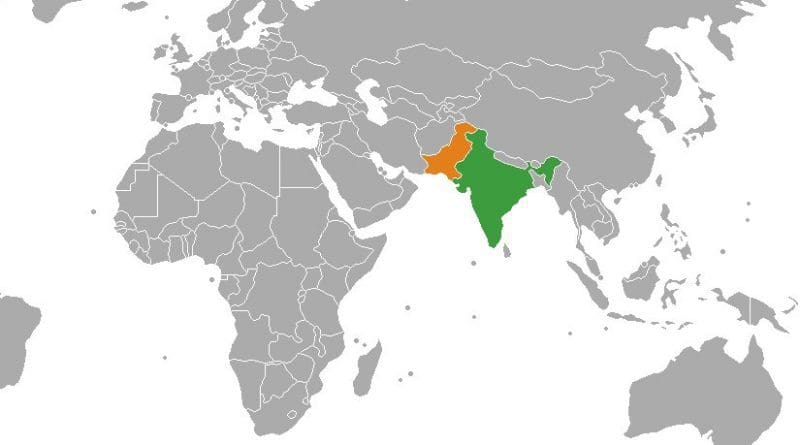India-Pakistan ‘Reset’ To Help Address Maoist Problem – Analysis
Barring a handful of die-hard pacifists, Indians appear to believe that peaceful relations with Pakistan are a non-event. Consequently, the recent attempts at initiating a process of Indo-Pak dialogue have been marked by cynicism. However, despite the pessimism about the state of affairs in Pakistan, it is still possible to give peace with Pakistan a chance. For even a marginal success there will free up New Delhi’s attention to focus more effectively on its internal wars.
Left-wing insurgency has emerged as the most serious internal security threat for India in recent years. Although actual violence by the main protagonist, the Communist Party of India-Maoist (CPI-Maoist) remains confined to about seven states in the last couple of years, the fatalities from such violence have surpassed the death toll reported from Jammu & Kashmir and the insurgencies in our North-east. In 2010, total fatalities (civilians and security forces) in Jammu & Kashmir were 116 and another 114 were from the insurgency-affected states of the Northeast. In comparison, the Maoist-affected states reported 1,003 civilian and security forces deaths that same year. A similar trend continues in the current year as well. In the first six months, 297 fatalities were reported from the Maoist theatres, compared to 47 in Jammu & Kashmir and 71 in the Northeast.
To quell the Maoist rebellion, 80 battalions of Central forces are currently assisting the state police forces. Such aggregation of forces has been made possible partly due to the improvement in the security situation in the North-eastern states, thus allowing battalions to be relieved and deployed in the Maoist-affected areas.
However, trends in Maoist violence clearly point to the fact that a military victory over the Maoists will require much more than this maximum possible amassing of Central forces. While new battalions are being added to the existing ones — an exercise which requires time and a huge amount of resources — some experts maintain that even a bloated para-military and weak state police force will not be sufficient to deal with the constantly evolving guerrilla strategy of the extremists. An appending assessment is that the solution to the Maoist problem would necessitate deployment of the Indian Army, which is not only better-armed and better-trained, but also comes with decades-long counter-insurgency experience in the North-east and Jammu & Kashmir.
The Army, however, has steadfastly refused to be involved in another internal security matter, in spite of the fact that it did play a role in the military defeat of the Naxalites in the early 1970s. However, its opposition notwithstanding, its role in dealing with the Maoist problem has grown. Starting with a single Brigadier-level officer’s involvement in the ministry of home affairs’ Naxal management division, the Army is currently training state and Central police personnel in counter-Maoist operations. Since January 2011, the Army has established a training centre in the Bastar region of Chhattisgarh state, the hub of Maoist activities. In recent months, it has also produced a white paper, the first ever detailed assessment on the requirements of its involvement in the Maoist theatre.
According to the document, the Indian Army needs to deploy at least 65,000 troops to provide a counter to the Maoists. The document has been prepared in response the Union home ministry’s proposal to start relocating the prestigious Rashtriya Rifles (RR) personnel from Kashmir to the Maoist theatres. One half of the RR comes from the Indian Army’s infantry wing, and the other from the rest of the Indian Army, making it an ideal force to deal with the challenge posed by the Maoists. The army’s top brass remains opposed to a direct engagement of its personnel against the Maoists, but it is reportedly willing to consider the gradual relocation of the RR personnel.
If that happens, it will signal a major change in India’s handling of the Naxal issue. A comparatively stabilised Jammu & Kashmir can indeed spare substantially large forces for such deployment. As of January 2011, nearly 80 Central Reserve Police Force battalions were deployed in the state, mostly in the Kashmir Valley. Similarly, a total of 65 RR battalions are also deployed in Kashmir. Even the availability of a third of these forces (both CRPF and RR) for counter-Maoist duties will release 50 additional battalions. The cumulative strength of forces deployed in the Maoist-affected states can then go up to about 130 battalions — a sizeable force strength to assist the efforts of the state police forces.
Such a scenario should be conditioned by some guarantee from Pakistan to restrain itself from the promotion of cross-border militancy in Kashmir. Militant violence in the state has declined sharply, but cross-border infiltration of terrorists remains at a significantly high level — an average of 503 infiltration incidents per year over the past six years. A reduction is possible only through a tacit policy of co-operation from the Pakistani army.
In recent times, Pakistan, under fire from its US benefactor and struggling under a severe economic crisis, is demonstrably much more amenable to addressing Indian concerns. In spite of its obsession with Kashmir and repeated vows to extend political and diplomatic support there, an influential section within the Pakistani establishment feels that good-neighbourly relations with India are economically beneficial. It is possible that engagement between the two countries will allow such beliefs to flourish. For India, a measure of normalcy with Pakistan, leading to a decline in militancy in Kashmir, will create the conditions for it to deal with the Maoist problem much more effectively.
This article was published by Business Standard and reprinted with the author’s permission

